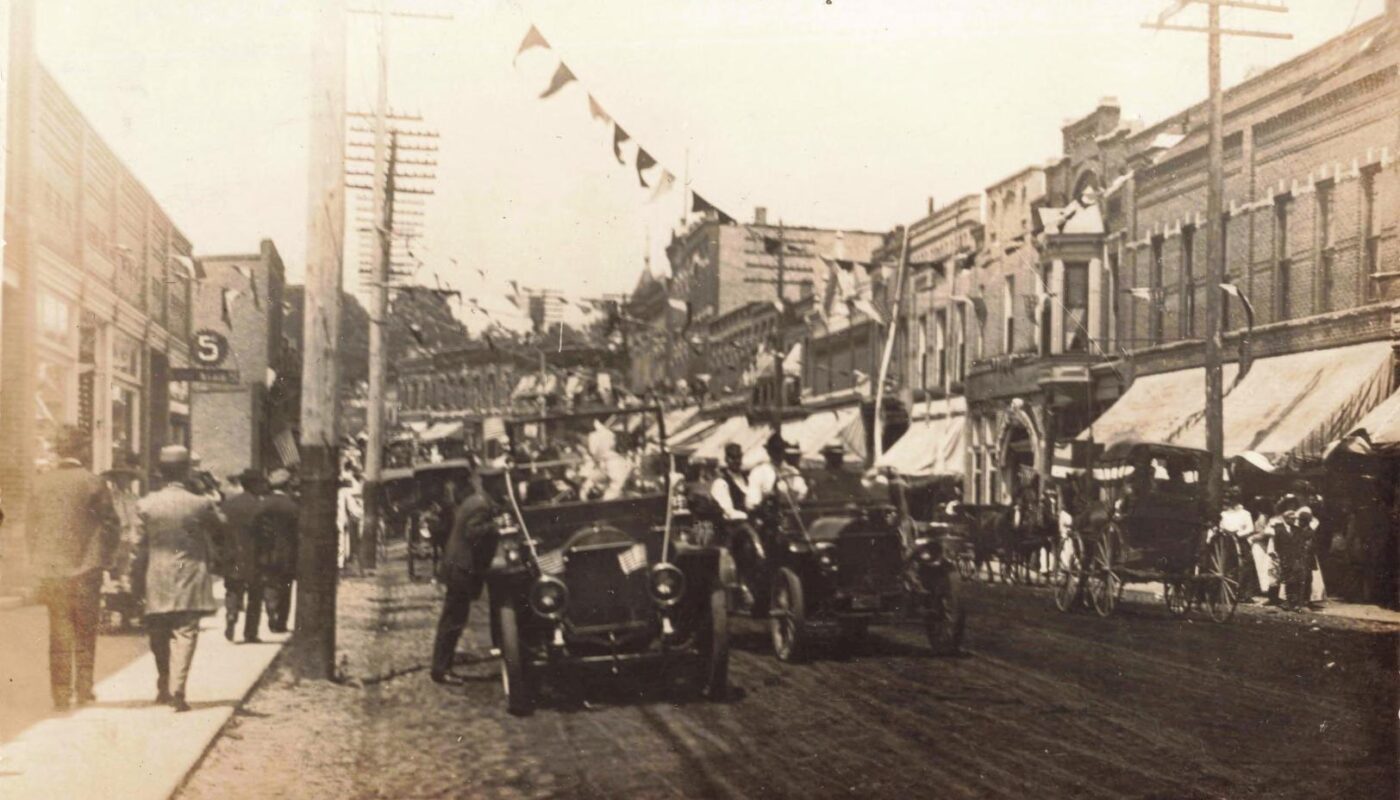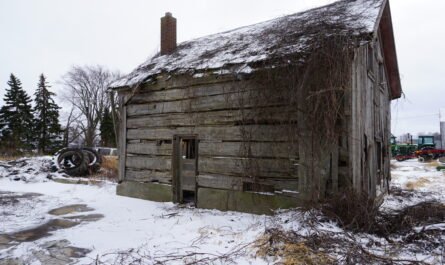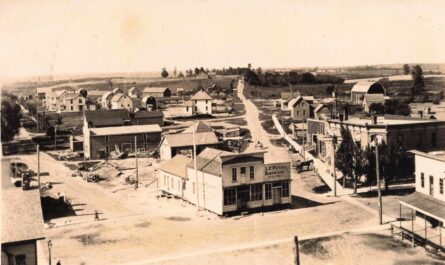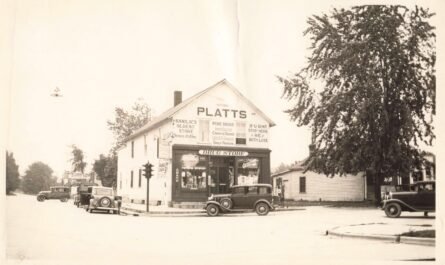VASSAR, Mich. — Two rare photographs from the early 20th century offer a glimpse into Vassar’s vibrant Fourth of July celebrations in 1909 and 1910. Captured on Huron Avenue, these images show the city during a period of rapid change, when horse-drawn wagons still lined the streets and automobiles were just starting to appear.
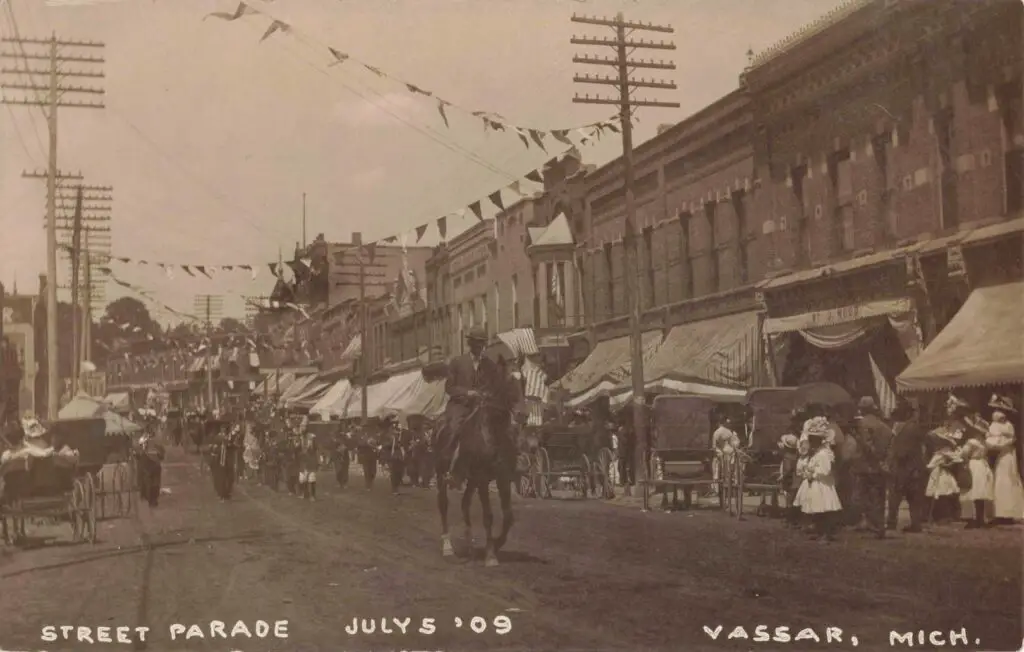
The first image, dated July 5, 1909, shows a street parade led by a man on horseback. Behind him, a marching band moves north along Huron Avenue. Flags and pennants stretch above the crowd, and families gather under storefront awnings for shade. Horse-drawn carriages are parked along the street, and many residents wear their Sunday best. Children in white dresses, straw hats, and bonnets stand near the curb, waiting for the procession to pass.
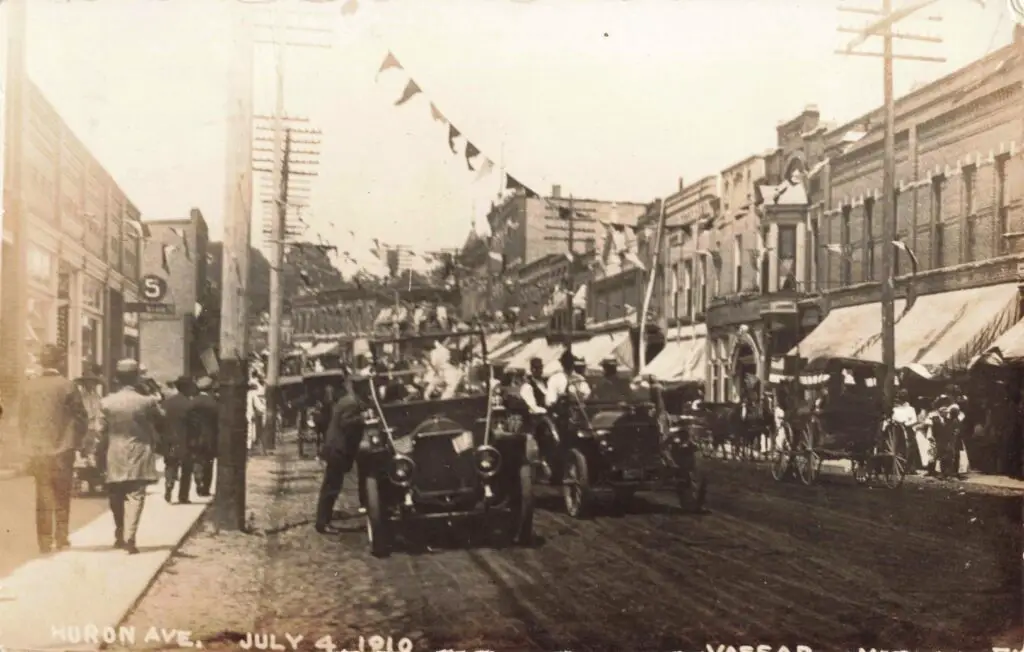
The second image, taken one year later on July 4, 1910, captures a different moment—one shaped by progress. Two early automobiles roll down the same stretch of Huron Avenue, decked out with small American flags. Crowds still pack the sidewalks, and bunting again decorates the buildings. This image shows a community adjusting to new technology while holding on to traditions. Telegraph and power poles tower overhead, marking the advance of modern infrastructure.
Both photos reveal the bustling commercial center that Vassar had become. Located in Tuscola County and founded in 1849, the town was originally a lumber hub. By the early 1900s, it had shifted toward agriculture and small-scale industry. The Independence Day parades offered a chance for local residents to come into town, socialize, and celebrate.
Several details stand out. The “5¢” signage in the 1910 photo points to a five-and-dime store, possibly a Woolworth’s or Kresge, common in towns of the era. In both images, the buildings along Huron Avenue are fully occupied, with striped awnings and decorated storefronts suggesting strong civic pride and economic activity.
The presence of automobiles in the 1910 scene is especially notable. With Detroit just 90 miles to the south, Michigan towns like Vassar were on the front lines of the nation’s automobile boom. The two cars on parade may have been owned by local businessmen or visitors, adding a new sense of speed and novelty to the event.
Taken together, these two photographs show a community on the edge of transformation. While the traditions of the 19th century still defined daily life, the future was clearly approaching—on wheels and under wires.

